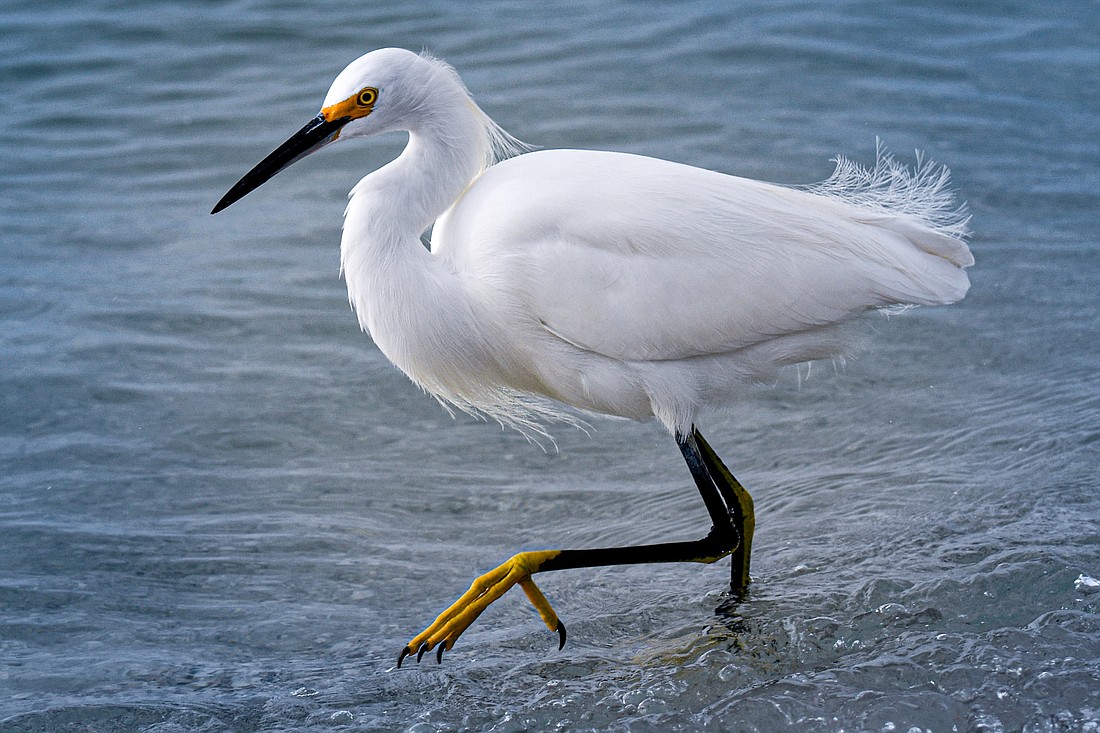- November 13, 2025
-
-
Loading

A sociable wading bird with snow-white plumage and a raucous call, snowy egrets are easily identified by their bright yellow toes. Walking through shallow cloudy water, they wiggle them to stir up fish and crustaceans, making their prey more visible and easier to catch. In deeper waters, snowy egrets drag their conspicuous toes in the water while flying. Using their bill, they then easily pluck startled fish that swim towards the surface out of the water.
Breeding snowy egrets grow long, wispy feathers on their backs, necks and heads. In the late 19th century, fancy hats with these plumes were in such high demand that snowy egret feathers were valued at $32 an ounce, twice the price of gold at the time. As result, snowy egrets were nearly hunted to extinction.
Due to citizen outrage, Florida passed laws against plume hunting. Reinforcement of these laws was a challenge, and birds in Florida continued to suffer until 1910, when the sale of wild bird plumage was made illegal in New York, where the hats were made. The mass killing of snowy egrets was one of the inspirations for the Migratory Bird Treaty Act of 1918, which protects wild birds.
Though snowy egret populations rebounded, they have been declining in Florida in recent decades. As they are an indicator of ecosystem health and habitat quality, this is concerning, and may result from disturbances such as pollution, water contamination, habitat loss and nesting ground disruptions.
To help our wading birds thrive, we can minimize our impact on mangroves and waterways, which are their breeding and foraging habitats. Supporting legislation that prioritizes the health of our aquatic ecosystems is also paramount.